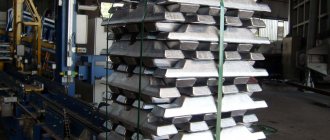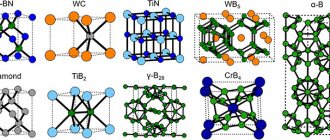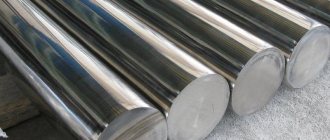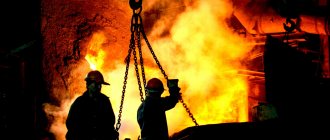Polymers – these are high-molecular chemical compounds (HMCs), the macromolecules of which are formed from many monomer units. Polymer molecules are characterized by a huge molecular weight, from several thousand to several million atomic mass units. There are several options for classifying polymers.
- Based on their chemical composition, polymers are divided into organic ( polyethylene ), inorganic (silicates) and organoelement ( fluoroplastic-4) .
- Depending on their origin, polymers are natural, artificial (modified) and synthetic.
- The classification of polymers according to the composition of their monomer units divides polymers into homopolymers and heteropolymers (or copolymers).
- Depending on the structure of the main chain, homochain and heterochain polymers are distinguished.
- Based on the spatial structure of monomer units , polymers are divided into stereoregular and nonstereoregular (or atactic).
- According to the structure of macromolecules, polymers are divided into: linear, branched, ladder and three-dimensional cross-linked (mesh, spatial).
- Depending on the production reaction, polymers are also divided into polymerization and polycondensation.
- The classification of polymers in relation to temperature effects is of important practical importance. In relation to heating allocate thermoplastic (polyethylene, polyvinyl chloride, polystyrene) And thermosetting polymers (epoxy resins).
Thermoplastics and their abbreviations
- ABS is a graft copolymer of acrylonitrile, styrene with butadiene or styrene-butadiene rubber.
- AC – cellulose acetate.
- LLDPE – linear low density polyethylene.
- MS is a copolymer of styrene with methyl methacrylate .
- MSN is a copolymer of styrene with methyl methacrylate and acrylonitrile .
- PAN – polyacrylonitrile.
- PA – polyamides.
- PAA – polyamide acid.
- PAR – polyarylates.
- PAS – polyalkylsulfone.
- PBT – polybutylene terephthalate.
- PVA – polyvinyl acetate.
- PVA – polyvinyl alcohol.
- PVF, fluoroplastic-1 – polyvinyl fluoride .
- PVC – polyvinyl chloride .
- PVDF, fluoroplastic-2 – polyvinylidene fluoride .
- PVDC – polyvinylidene chloride .
- PI – polyimides.
- PC – polycarbonates.
- PMMA – polymethyl methacrylate .
- PO – polyolefins.
- PP – polypropylene .
- PS – polystyrene .
- EPS – expanded polystyrene .
- PSF – polysulfone.
- PTP – pentaplast .
- PTFE, fluoroplastic-4, fluorlon-4, teflon - polytetrafluoroethylene
- PTFCE, fluoroplastic-3. fluorlon-3 – polytrifluorochloroethylene .
- PU - polyurethanes .
- PF – polyformaldehyde .
- PPO – polyphenylene oxide.
- PE – polyethylene .
- PEI – polyetherimide.
- HDPE, HDPE, HDPE – high-density polyethylene (low pressure) .
- LDPE, LDPE, LDPE – low density polyethylene (high pressure).
- PEO – polyethylene oxide.
- PESD – medium pressure polyethylene.
- PET – polyethylene terephthalate .
- CAM is a copolymer of styrene with α-methylstyrene.
- SAN is a copolymer of styrene and acrylonitrile.
- STD is a copolymer of trioxane with dioxolane.
- SFD is a copolymer of formaldehyde with dioxalane.
- TAC – cellulose triacetate.
- FN – phenylone.
- CPE – chlorinated polyethylene.
- CSPE – chlorosulfonated polyethylene.
What are copolymers
Polymers whose macromolecules contain several types of monomer units are called copolymers. Copolymers in which units of each type form sufficiently long continuous sequences that replace each other within the macromolecule are called block copolymers. One or more chains of another structure can be attached to the internal (non-terminal) links of a macromolecule of one chemical structure. Such copolymers are called graft copolymers (see also Copolymers). Polymers in which each or some stereoisomers of a unit form sufficiently long continuous sequences that replace each other within one macromolecule are called stereoblock copolymers.
Thermosets and their abbreviations
- BF is a phenol-formaldehyde oligomer combined with polyvinyl butyral.
- KS – silicon resins.
- MAS – melamine aldehyde resins.
- NPS – unsaturated polyester resins.
- PI – polyimides.
- PEEK – polyetheretherketone.
- PU – polyurethanes.
- PPU - polyurethane foam .
- FS – furan resins.
- FFS – phenol-formaldehyde resins.
- ES – epoxy resins.
Classification by method of production
Polymers are produced either by polymerization or by polycondensation.
| Polymerization | Polycondensation |
| This is the joining of some molecules to others due to the breaking of multiple bonds. By-products, as a rule, are not formed. Polyethylene, polypropylene, etc. | Polymer formation occurs due to a substitution reaction. This produces a low molecular weight by-product. Phenol-formaldehyde resin, nylon |
| Polymerization is the process of formation of a high-molecular substance (polymer) by repeated addition of monomer molecules to active centers in a growing polymer molecule. |
For example , the formation of polyethylene occurs according to the polymerization mechanism:
| Polycondensation is the process of formation of high-molecular compounds, which occurs through the substitution mechanism and is accompanied by the release of low-molecular-weight by-products (usually water). |
For example , the formation of nylon proceeds through the polycondensation mechanism:
Elastomers and their abbreviations
- BC is a static copolymer of isobutylene and 0.6-3.0% isoprene.
- DST-30 – thermoplastic elastomer with 30% styrene blocks.
- SKD – cis-polybutadiene.
- SKDL – cis-polyisobutylene (lithium catalyst).
- SKI – cis-polyisoprene.
- SKMS-30 – butadiene-methylstyrene.
- SKN-18 , SKN-26 - butadiene-nitrile with the indicated content of acrylic acid nitrile in the macromolecule (in %), etc.
- SKS-30, SKMS-30 – butadiene-styrene, butadiene-methylstyrene with 30% styrene in the molecule.
- SKS-30A – butadiene-styrene low-temperature polymerization .
- SCTV – methylvinylsiloxane [up to 1% (mol.) vinyl monomer]
- SKEP is a copolymer of ethylene (40-70%) and propylene.
- SKEPT is a copolymer of ethylene, propylene and 1-2% non-conjugated diene.
- SKU – polyurethane.
- TEP – thermoplastic elastomer , a block copolymer of butadiene and styrene.
Chemical properties
The reactions of high molecular weight compounds are determined by the functional group. If the compound contains a hydroxyl group-OH, then the polymer undergoes the same reactions as alcohols. If the macromolecule contains a carboxyl group –COOH, then the polymer is characterized by the same reactions as carboxylic acids.
Reactivity increases in the presence of double bonds and functional groups. They also determine the ability of individual macromolecules to be cross-linked. Examples of cross-linking include vulcanization and the transfer of linear macromolecules of thermosetting polymers into network structures.
Application of polymers
It is difficult to overestimate the importance of polymers from the point of view of their practical application. In the modern world there is practically no sphere of human life and society, science and business where at least one type of polymer is not used.
Polymer materials are most actively used in the production of cars, machinery and equipment; in the aviation and aerospace industries; in the industry of development and creation of medical devices and equipment. Let us dwell on some of the areas of practical use of polymer materials in more detail.
Application of polymers in the automotive industry
Main article: Polymers in the automotive industry
The reliability of a modern car, the durability and comfort of its operation, as well as (what is important) the safety of movement can only be ensured if polymer materials - plastics, rubbers, varnishes and paints , etc.
Plastics are used to make car bodies and cabins and their individual large-sized parts, various small-sized parts for structural and decorative purposes, heat-insulating and sound-proofing parts, etc.
among the most important and most material-intensive rubber products for the automotive industry . Numerous rubber products are also of great importance in this industry, the quality of which largely determines the reliability of the vehicle.
Paint and varnish materials used for priming and final finishing of metal surfaces must form coatings that reliably protect the metal from corrosion (see Protective paint and varnish coatings) and have high hardness, elasticity, impact resistance, heat and wear resistance.
Application of polymers in aircraft construction
Main article: Polymers in aircraft manufacturing
Another large-scale area of practical application of a wide range of polymer materials is the industry of development, production and operation of aircraft.
The feasibility of using polymers in this direction is due to their lightness, variability of composition and structure, and, consequently, a wide range of technical properties. The tendency to expand the boundaries of the use of polymer materials is also typical for the production of rockets and spacecraft.
Main polymers and segments of use:
- Thermosets;
- Thermoplastics;
- Foam plastics and honeycomb plastics;
- Rubber;
- Sealants and adhesives;
- Paints and varnishes.
You will find detailed information on the use of polymers for these segments in the aircraft industry in the main article, the link to which is indicated at the beginning of the paragraph.
Application of polymers in mechanical engineering
Main article: Application of polymers in mechanical engineering
Perhaps one of the key areas for the use of polymers and materials based on them is mechanical engineering. For example, the consumption of plastics in this industry is already becoming comparable (in units of volume) with the consumption of steel. Analysts note that the use of paints and varnishes, synthetic fibers, adhesives, rubber and simple substances and polymer-based materials is also continuously increasing.
The feasibility of using polymers in mechanical engineering is determined, first of all, by the possibility of reducing the cost of products. At the same time, the most important technical and economic parameters of the machines are also improved: weight is reduced, durability, reliability and other essential properties are increased.
Application of polymers in medicine
Main article: Polymers in medicine
Due to the wide range of properties and physical and chemical characteristics of the resulting products, polymers and materials based on them have found wide application in medicine.
The use of polymer materials for the manufacture of products and equipment for medical purposes allows for the serial production of instruments, patient care items, special utensils and various types of packaging for medicines, which have a number of advantages over similar products made of metals and glass: cost-effectiveness, and in some cases increased durability to exposure to various environments, the ability to produce disposable products, etc.
Particular attention should be paid to the issue of the use of polymer materials in pharmacology . The role of this category of materials in the pharmacological aspect is still relatively small. They are rarely used in medical practice. Naturally, very stringent requirements are imposed on substances introduced into the body, especially those that must enter the blood, lymph, intercellular and cellular cavities in dissolved form and can reach any part of the body, any of its receptors.
It is also worthwhile to dwell separately on the issue of the practical use of polymer materials in such a medical segment as surgery . Taking into account the properties of the resulting products, polymer materials are actively used in several segments of modern surgery:
- Reconstructive surgery;
- Cardiovascular surgery;
- Surgery of internal organs and tissues;
- Traumatology and orthopedics;
- The use of polymers in functional units of surgical devices.
In conclusion, we note that polymers in the medical aspect are also used in the creation of blood substitutes and plasma substitutes .
Application of polymers in the food industry
Main article: Polymers in the food industry
Perhaps the most well-known issue for the mass consumer is the issue of using polymers for the needs of the food industry.
It should be noted that polymers in the food industry must meet a set of certain sanitary and hygienic requirements due to the contact of these materials with food. A mandatory condition for the use of polymer materials in the food industry is permission from sanitary inspection authorities, which is issued on the basis of a set of tests, including assessment of organoleptic properties, as well as sanitary-chemical and toxicological studies of polymers and individual ingredients included in composite materials and products.
Among the largest consumers of polymer materials in the food industry are “food engineering” and the production of containers and packaging for storing and transporting food products. Moreover, in the latter case, polymers can act both as the main material (for example, plastic bottles), and as auxiliary elements and additives designed (for example) to protect a metal container from corrosion.
Welding of plastics
Only so-called thermoplastic plastics ( thermoplastics ), which become plastic when heated, and after cooling take on their original appearance and properties, are subject to welding. In addition to them, there are thermosetting plastics that change their properties when heated. When welding, plastics should be heated no higher than their decomposition temperature, i.e., within 140–240 °C.
Plastics can be welded in various ways :
- heated gas;
- contact heat from heating elements;
- friction;
- ultrasound (Fig. 8).
The basic conditions for obtaining a high-quality plastic joint during welding are as follows:
- The diameter of the filler rod should not exceed 4 mm in order to heat it up quickly enough and ensure the required welding performance.
- Welding should be carried out as quickly as possible to avoid thermal decomposition of the material.
- It is necessary to accurately maintain the welding temperature to avoid underheating or overheating of the material being welded.
In Fig. 8 shows equipment and methods for welding plastics.
Rice. 8. Welding extruder for welding plastics, polymers
Application of polymers in shipbuilding
Main article: Polymers in shipbuilding
Thanks to the use of polymer materials, the technical and operational characteristics of ships are significantly improved, their reliability and durability are increased, the duration and labor intensity of construction are reduced.
The modern shipbuilding industry is one of the largest consumers of synthetic polymer materials, and their areas of application are very diverse, and the prospects for use are almost unlimited. Polymers are used for the manufacture of ship hulls and hull structures, in the production of parts for ship mechanisms, instruments and equipment, for painting ships, finishing rooms and their heat, sound and vibration insulation, as well as other useful properties.
You can learn more about polymers and polymer materials by reading the latest news, studying other encyclopedia and library materials on the MPlast.by portal on the personal page of the topic - polymers .
Reaction to heat treatment
There are two types:
- Thermoplastic
– after heating they return to their original shape. Can be recycled many times.
- Thermoset
– They are destroyed under the influence of high temperatures.
As a result of various processing processes, the resulting polymers are divided into 4 main groups:
- plastics
– polypropylene, polystyrene, polyvinyl chloride, polyurethane;
- fibers
– acetate silk, viscose;
- elastomers
– rubber, rubber (vulcanized rubber);
- biopolymers
- carbohydrates, proteins, nucleic acids.
Why paint plastic?
The need to paint plastics is dictated, on the one hand, by aesthetic considerations, and on the other, by the need to protect the plastics. After all, nothing is eternal. Although plastic does not rot, during operation and atmospheric influences it is still subject to aging and destruction. And the applied paint layer protects the surface of the plastic from various aggressive influences and extends its service life.
At the factory, painting plastic parts does not cause any difficulties. The technologies here are well-established, and in this case we are talking about painting new identical parts from the same plastic. But in a workshop, painters are already faced with the problem of heterogeneity in the materials of various parts.
This is where you have to answer the question: “What is plastic anyway? What is it made from, what are its properties and main types?
Determining the type of plastic. Marking
Any repair to a plastic part must begin with determining the type of plastic the part is made from. If in the past this was not always easy, now it is easy to “identify” plastic - all parts, as a rule, are marked.
Manufacturers usually stamp the plastic type designation on the inside of the part, be it a bumper or a mobile phone cover. The type of plastic is usually enclosed in brackets and may look like this: >PP/EPDM<, >PUR<, .
Assignment : Take off the cover of your mobile phone and look at what type of plastic it is made of. Most often this is >PC<.
There can be a lot of options for such abbreviations. Let's look at several of the most common types of plastics in the automotive industry.
[edit] Historical background
Screwed up the planet!
Vedomosti is also on the topic. History also knows an epic example of the use of a similar phrase. As Khrushchev writes, referring to the executed Beria, whom you can no longer ask, in the first days of the war, Stalin in despair told members of the Politburo: “Lenin left us a proletarian Soviet state, and we fucked it up.”
This fact is confirmed by a number of testimonies from contemporaries:
| « | Stalin was morally completely depressed and made the following statement: “The war has begun, it is developing catastrophically. Lenin left us a proletarian Soviet state, and we screwed it up.” That's literally how I put it. | » |
| - Khrushchev N.S., “Time. People. Power. (Memories)" | ||
| « | ...a direct route to Moscow opened from Belarus. Stalin was very depressed. When we left the People's Commissariat, he said the following phrase: “Lenin left us a great legacy, and we, his heirs, screwed it all up...” We were amazed by this statement from Stalin. | » |
| — Mikoyan A.I., “So it was” | ||
| « | Stalin was in a very difficult state […] He said, “They screwed up.” This applied to all of us combined. I remember this well, that’s why I’m saying it. “They screwed it all up,” he simply said. And we screwed up. It was such a difficult situation back then. | » |
| — (From Molotov’s memoirs) F. Chuev, “Molotov. Semi-powerful ruler" | ||










